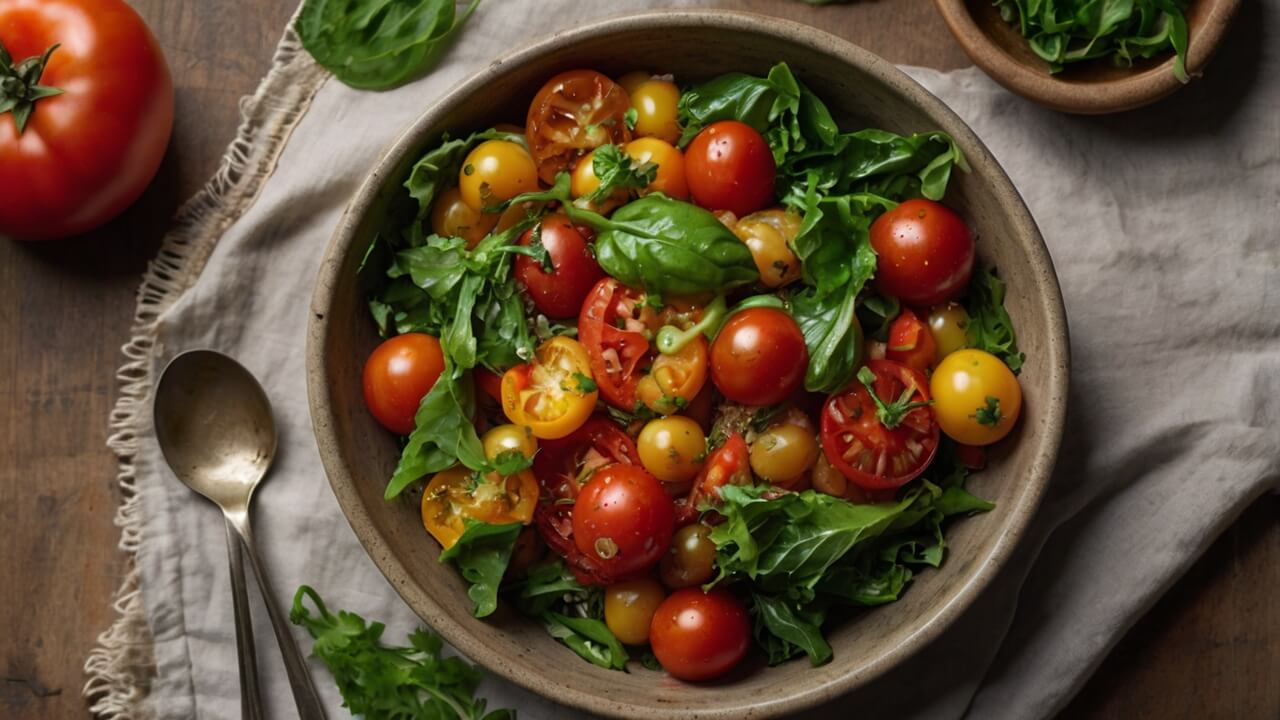The Autoimmune Protocol (AIP) diet is a therapeutic approach designed to help individuals with autoimmune conditions manage their symptoms and promote healing.
Autoimmune diseases occur when the body’s immune system mistakenly attacks its own healthy cells and tissues, leading to chronic inflammation and a wide range of debilitating symptoms.
Autoimmune conditions can affect various parts of the body, including the joints, skin, digestive system, and organs. Some common examples include rheumatoid arthritis, lupus, Hashimoto’s thyroiditis, multiple sclerosis, and inflammatory bowel diseases like Crohn’s disease and ulcerative colitis.
The AIP diet aims to identify and eliminate potential dietary triggers that may contribute to inflammation and autoimmune flare-ups.
By removing certain foods that are known to be inflammatory or difficult to digest, the diet seeks to reduce the workload on the immune system and promote healing.
Following the AIP diet is crucial for managing autoimmune symptoms because it addresses the root cause of inflammation.
By eliminating problematic foods and allowing the body to rest and repair, individuals with autoimmune conditions may experience a reduction in symptoms, improved quality of life, and potentially even remission in some cases.
Challenges of Following a Vegetarian AIP Diet
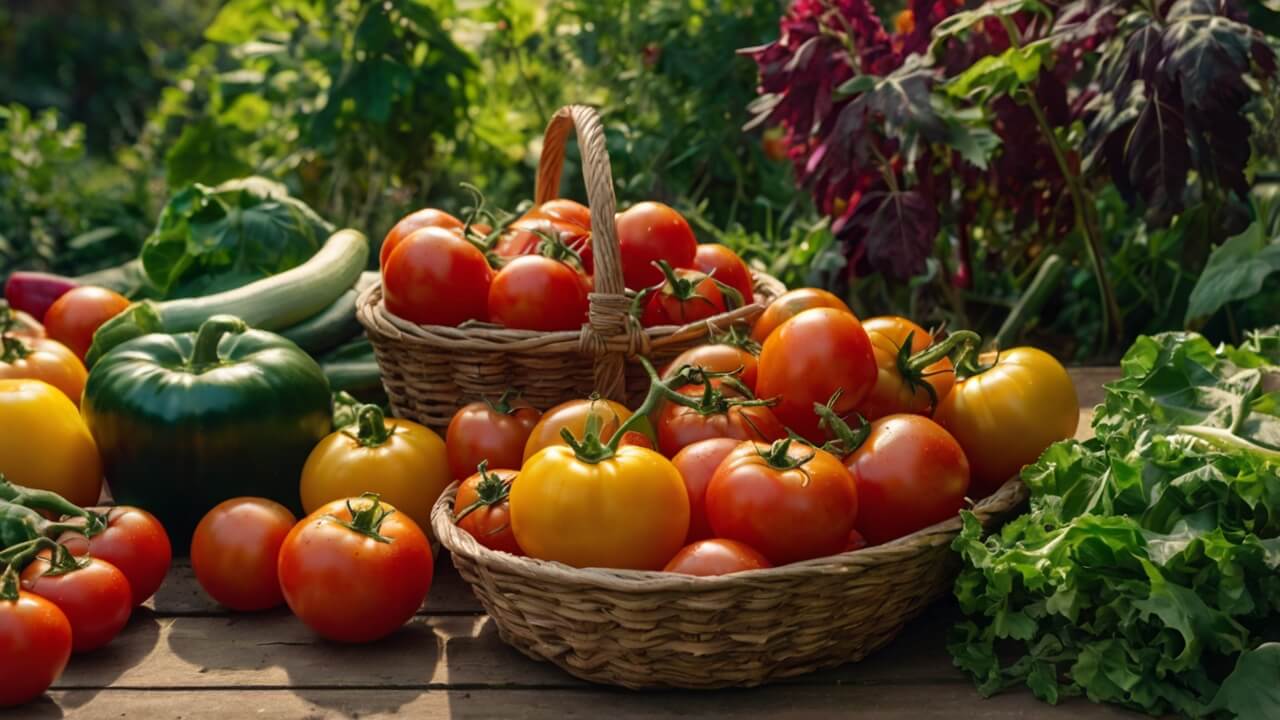
Following a vegetarian diet while adhering to the Autoimmune Protocol (AIP) can be quite challenging due to several reasons:
Restrictions on Common Vegetarian Protein Sources
The AIP diet eliminates legumes, nuts, and seeds, which are common sources of protein for vegetarians. This significantly limits the available options for plant-based protein, making it more difficult to meet daily protein requirements.
Limited Options for Plant-Based Meals
With the exclusion of grains, legumes, nuts, and seeds, the vegetarian AIP diet can feel restrictive and limiting in terms of meal options. Finding satisfying and nutrient-dense meals can be a constant struggle, particularly when dining out or traveling.
Difficulty in Finding Variety and Flavor
Many vegetarian dishes rely heavily on ingredients like beans, lentils, and nuts for added texture, flavor, and heartiness. Without these ingredients, it can be challenging to create flavorful and varied meals that don’t become monotonous or boring over time.
Detailed Guidelines for a Vegetarian AIP Diet
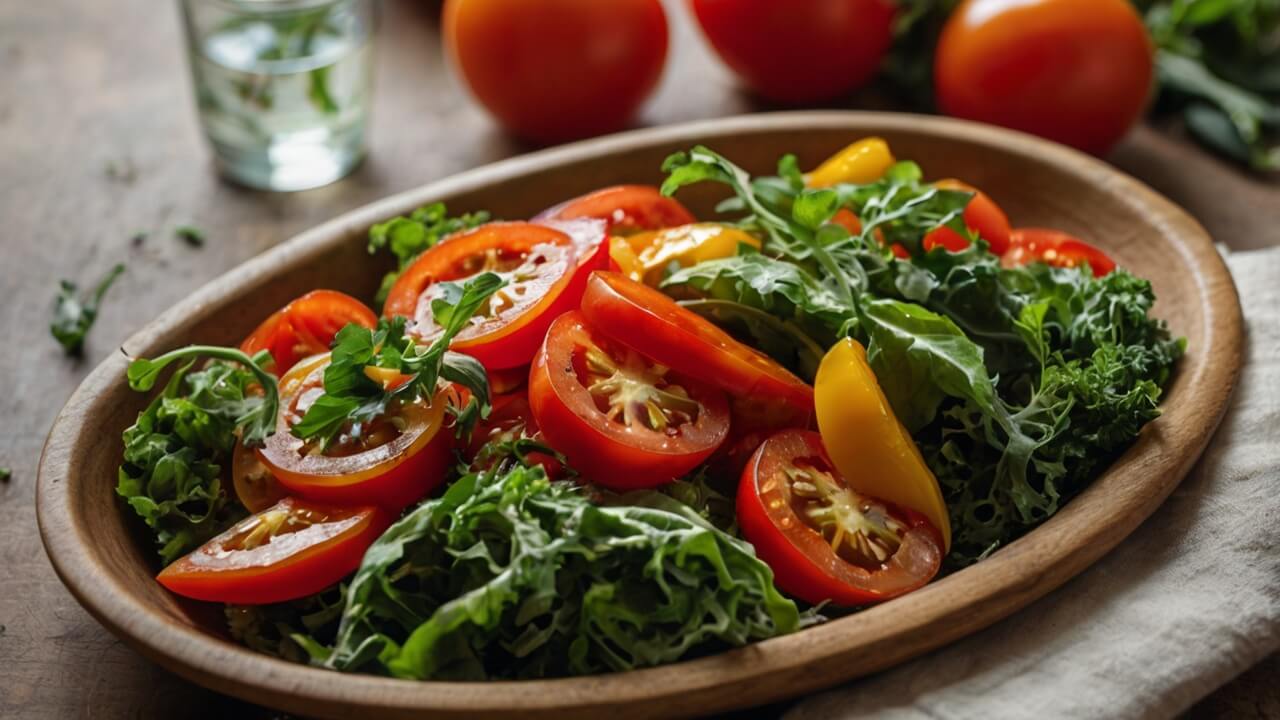
Following a vegetarian Autoimmune Protocol (AIP) diet can be challenging, but with the right knowledge and planning, it’s entirely possible to maintain a nutrient-dense and delicious diet. Here are some detailed guidelines to help you navigate this dietary approach successfully.
Foods to Include:
- Fresh Vegetables: Focus on a wide variety of colorful, nutrient-rich vegetables, such as leafy greens, cruciferous veggies (broccoli, cauliflower, cabbage), root vegetables (sweet potatoes, carrots, beets), and others like zucchini, eggplant, and bell peppers.
- Fresh Fruits: Enjoy a range of fresh fruits, including berries, citrus fruits, apples, pears, and tropical fruits like mango and pineapple.
- Healthy Fats: Incorporate healthy fats from sources like avocados, coconut oil, olive oil, and avocado oil for cooking and dressing salads.
- Herbs and Spices: Flavor your meals with a variety of fresh and dried herbs and spices, such as basil, cilantro, turmeric, ginger, and cumin.
- Natural Sweeteners: Use small amounts of natural sweeteners like honey, maple syrup, or coconut sugar when needed.
- Fermented Foods: Include fermented foods like sauerkraut, kimchi, and coconut yogurt for their probiotic benefits.
- Gluten-Free Flours: Experiment with gluten-free flours like coconut flour, arrowroot flour, and cassava flour for baking and thickening sauces.
Foods to Avoid:
- Grains: Eliminate all grains, including wheat, rice, oats, corn, and pseudo-grains like quinoa.
- Legumes: Avoid all legumes, such as beans, lentils, peanuts, and soy products.
- Nuts and Seeds: Steer clear of all nuts and seeds, including nut butters and seed-based oils.
- Dairy Products: Eliminate all dairy products, including milk, cheese, yogurt, and butter.
- Eggs: Avoid consuming eggs during the elimination phase of the AIP diet.
- Nightshade Vegetables: Eliminate nightshade vegetables like tomatoes, potatoes, eggplants, and peppers.
- Alcohol and Coffee: Refrain from consuming alcohol and coffee during the elimination phase.
- Processed Foods: Avoid processed foods, artificial additives, and preservatives.
Tips for Meal Planning and Preparation:
- Plan Ahead: Meal planning and prepping ingredients in advance can help you stay on track with your vegetarian AIP diet.
- Batch Cook: Prepare larger portions of AIP-friendly dishes and freeze or refrigerate them for easy reheating throughout the week.
- Read Labels Carefully: Always read ingredient labels thoroughly to ensure that products are AIP-compliant and free from any restricted ingredients.
- Experiment with New Recipes: Try new recipes and explore different flavor combinations to keep your meals interesting and enjoyable.
- Stay Hydrated: Drink plenty of water and herbal teas throughout the day to support overall health and hydration.
Remember, following a vegetarian AIP diet requires patience, dedication, and a willingness to experiment with new ingredients and recipes. With time and consistency, you’ll find a routine that works best for your individual needs and preferences.
Breakfast Recipes
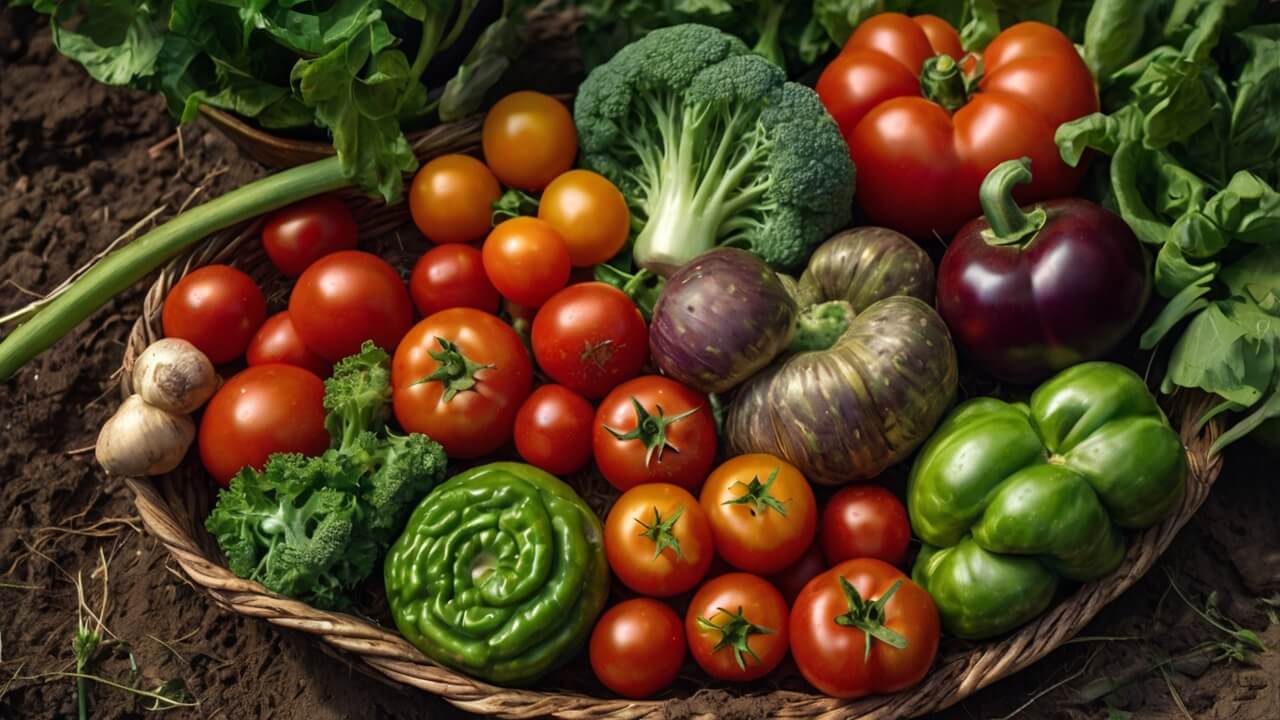
Sweet Potato Hash with Avocado and Roasted Radish
This vibrant and flavorful dish is a perfect way to start your day on the vegetarian AIP diet. Roasted radishes bring a subtle peppery kick, complemented by the creaminess of avocado and the natural sweetness of sweet potatoes. Here’s how to make it:
Ingredients:
- 2 medium sweet potatoes, diced
- 1 bunch radishes, quartered
- 1 avocado, diced
- 2 tablespoons olive oil or avocado oil
- 1 teaspoon garlic powder
- 1 teaspoon onion powder
- Salt and pepper to taste
- Fresh cilantro or parsley for garnish (optional)
Instructions:
- Preheat your oven to 400°F (200°C).
- Toss the diced sweet potatoes and quartered radishes with olive oil, garlic powder, onion powder, salt, and pepper.
- Spread the mixture on a baking sheet and roast for 25-30 minutes, or until the vegetables are tender and slightly caramelized.
- Remove from the oven and gently toss with the diced avocado.
- Garnish with fresh cilantro or parsley if desired.
Beet and Berry Smoothie Bowl
Start your day with a burst of antioxidants and natural sweetness with this vibrant smoothie bowl. The combination of beets and berries creates a beautiful color and flavor, while providing a nutrient-dense breakfast option.
Ingredients:
- 1 cup frozen mixed berries
- 1 small cooked beet, peeled and chopped
- 1 ripe banana
- 1 cup unsweetened coconut milk or almond milk
- 1 tablespoon maple syrup or honey (optional)
- 1 teaspoon vanilla extract
- Toppings: fresh berries, coconut flakes, sliced bananas, or other AIP-friendly toppings
Instructions:
- Add the frozen berries, cooked beet, banana, coconut or almond milk, maple syrup or honey (if using), and vanilla extract to a high-speed blender.
- Blend until smooth and creamy, adjusting the thickness by adding more milk if needed.
- Pour the smoothie mixture into a bowl.
- Top with fresh berries, coconut flakes, sliced bananas, or other AIP-friendly toppings of your choice.
Berry and Chia Seed Pudding
This make-ahead pudding is a convenient and nutritious breakfast option that can be prepared in advance. Chia seeds provide a boost of fiber and omega-3s, while berries add natural sweetness and antioxidants.
Ingredients:
- 1 cup unsweetened coconut milk or almond milk
- 1/4 cup chia seeds
- 1 cup fresh or frozen mixed berries
- 1 tablespoon maple syrup or honey (optional)
- 1 teaspoon vanilla extract
- Toppings: fresh berries, coconut flakes, or other AIP-friendly toppings
Instructions:
- In a jar or bowl, combine the coconut or almond milk, chia seeds, mixed berries, maple syrup or honey (if using), and vanilla extract.
- Stir well to combine and allow the mixture to sit for 10 minutes, then stir again to prevent clumping.
- Cover and refrigerate for at least 4 hours or overnight to allow the chia seeds to swell and thicken.
- Before serving, give the pudding a good stir and top with fresh berries, coconut flakes, or other AIP-friendly toppings of your choice.
Turmeric Golden Milk Latte
This warm and comforting latte is a delicious way to incorporate the anti-inflammatory benefits of turmeric into your morning routine. The combination of turmeric, ginger, and coconut milk creates a soothing and flavorful beverage.
Ingredients:
- 2 cups unsweetened coconut milk
- 1 teaspoon ground turmeric
- 1/2 teaspoon ground ginger
- 1/4 teaspoon ground cinnamon
- 1 tablespoon maple syrup or honey (optional)
- 1/4 teaspoon vanilla extract
- Pinch of black pepper (optional, to enhance turmeric absorption)
Instructions:
- In a small saucepan, whisk together the coconut milk, turmeric, ginger, cinnamon, maple syrup or honey (if using), vanilla extract, and a pinch of black pepper (if using).
- Heat the mixture over medium heat, whisking frequently, until it starts to simmer.
- Remove from heat and use a milk frother or whisk vigorously to create a frothy texture.
- Pour the golden milk latte into mugs and enjoy warm.
Note: You can adjust the sweetness and spice levels to your preference by adjusting the amounts of maple syrup or honey, and the spices.
Main Course Recipes
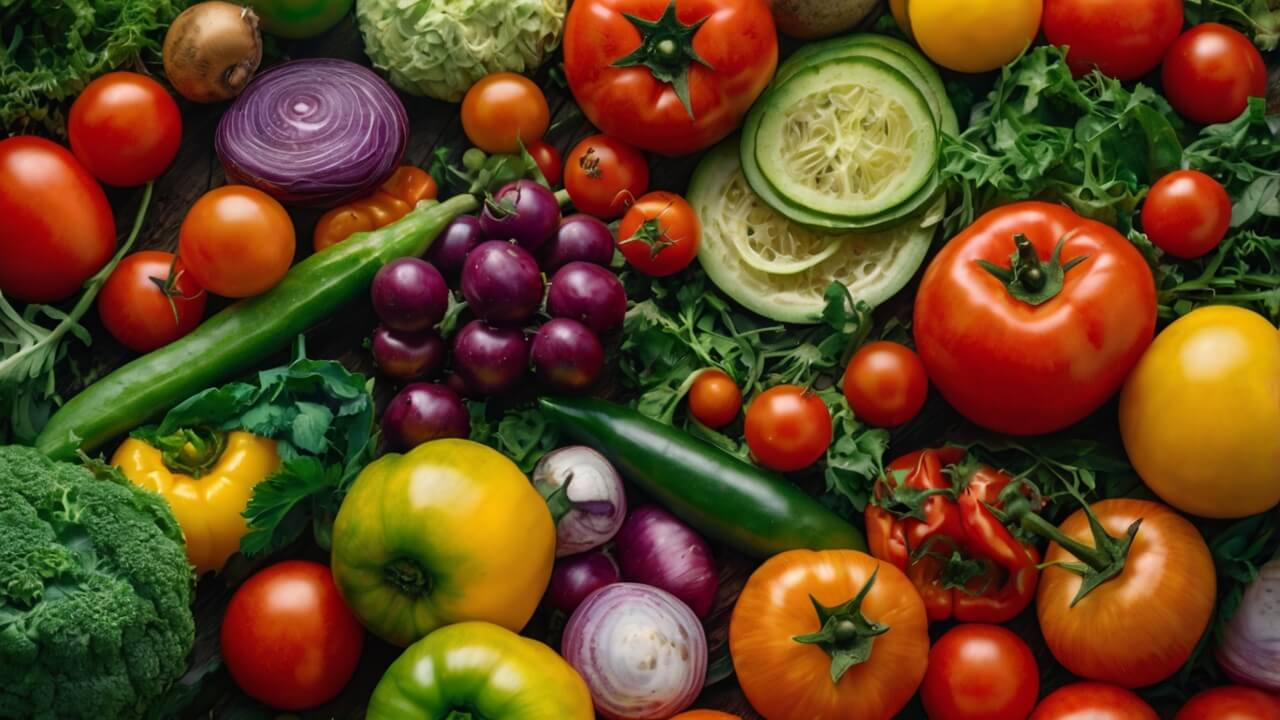
Zucchini “Pasta” with Basil Pesto (without nuts or seeds)
This light and flavorful dish is a perfect way to enjoy the fresh taste of basil pesto without the need for nuts or seeds. Zucchini noodles, also known as “zoodles,” provide a low-carb and nutrient-dense base for the pesto sauce, making it an ideal choice for those following the AIP diet.
Zucchini “Pasta” Ingredients:
- 4 medium zucchinis, spiralized or julienned
- 2 cups fresh basil leaves
- 1/2 cup extra virgin olive oil
- 2 cloves garlic, minced
- 1/4 cup nutritional yeast (optional, for a cheesy flavor)
- 1/4 cup water (or more as needed)
- Juice of 1/2 lemon
- Sea salt and black pepper (omit for AIP) to taste
Basil Pesto Instructions:
- In a food processor, combine the basil leaves, olive oil, garlic, nutritional yeast (if using), lemon juice, salt, and pepper.
- Pulse until the ingredients are well combined and reach a pesto-like consistency, adding water as needed to reach the desired texture.
- Taste and adjust seasoning as desired.
Zucchini “Pasta” Preparation:
- Using a spiralizer or julienne peeler, create zucchini noodles from the zucchinis.
- In a large skillet or pan, gently sauté the zucchini noodles for 2-3 minutes, just until slightly softened.
- Remove from heat and toss with the basil pesto sauce.
- Serve immediately, garnished with additional basil leaves or lemon zest if desired.
Baked Stuffed Sweet Potato with Broccoli
This hearty and satisfying dish combines the sweetness of baked sweet potatoes with the nutrient-rich goodness of broccoli, making it a perfect meal for those following the AIP diet.
Ingredients:
- 4 medium sweet potatoes
- 2 cups broccoli florets
- 1/2 cup coconut milk
- 2 tablespoons coconut oil, melted
- 1 teaspoon garlic powder
- Sea salt and black pepper (omit for AIP) to taste
Instructions:
- Preheat your oven to 400°F (200°C).
- Wash the sweet potatoes and prick them several times with a fork.
- Bake the sweet potatoes for 45-60 minutes, or until they are tender when pierced with a fork.
- While the sweet potatoes are baking, steam or lightly sauté the broccoli florets until tender but still crisp.
- Remove the sweet potatoes from the oven and let them cool slightly.
- Slice each sweet potato lengthwise and scoop out the flesh, leaving a thin layer attached to the skin.
- In a bowl, mash the sweet potato flesh with the coconut milk, coconut oil, garlic powder, salt, and pepper (if using).
- Fold in the steamed broccoli florets, being careful not to overmix.
- Stuff the sweet potato mixture back into the potato skins.
- Return the stuffed sweet potatoes to the oven and bake for an additional 10-15 minutes, or until heated through.
- Serve hot, garnished with additional coconut milk or fresh herbs if desired.
Nightshade-Free AIP Curry with Coconut Milk, Ginger, and Turmeric
This flavorful and aromatic curry is a perfect example of how delicious and satisfying AIP-friendly meals can be. By using coconut milk as the base and incorporating the warmth of ginger and turmeric, this dish is free from nightshades while still delivering a rich and comforting taste.
Ingredients:
- 1 tablespoon coconut oil
- 1 onion, diced
- 3 cloves garlic, minced
- 1-inch piece fresh ginger, grated
- 2 teaspoons ground turmeric
- 1 teaspoon ground coriander
- 1/2 teaspoon ground cumin
- 1/4 teaspoon ground cinnamon
- 1 cup vegetable broth or water
- 1 (13.5 oz) can full-fat coconut milk
- 2 cups diced vegetables (e.g., carrots, cauliflower, green beans)
- Sea salt and black pepper (omit for AIP) to taste
- Fresh cilantro or parsley for garnish (optional)
Instructions:
- In a large saucepan or Dutch oven, heat the coconut oil over medium heat.
- Add the diced onion and sauté for 2-3 minutes until translucent.
- Add the minced garlic and grated ginger, and sauté for another minute until fragrant.
- Stir in the turmeric, coriander, cumin, and cinnamon, and cook for 30 seconds to toast the spices.
- Pour in the vegetable broth or water and coconut milk, and whisk to combine.
- Add the diced vegetables and season with salt and pepper (if using).
- Bring the mixture to a simmer, then reduce the heat to low and let it simmer for 15-20 minutes, or until the vegetables are tender.
- Taste and adjust seasoning as needed.
- Serve the curry over cauliflower rice or with your favorite AIP-friendly accompaniment, garnished with fresh cilantro or parsley if desired.
Delectable AIP-Friendly Desserts
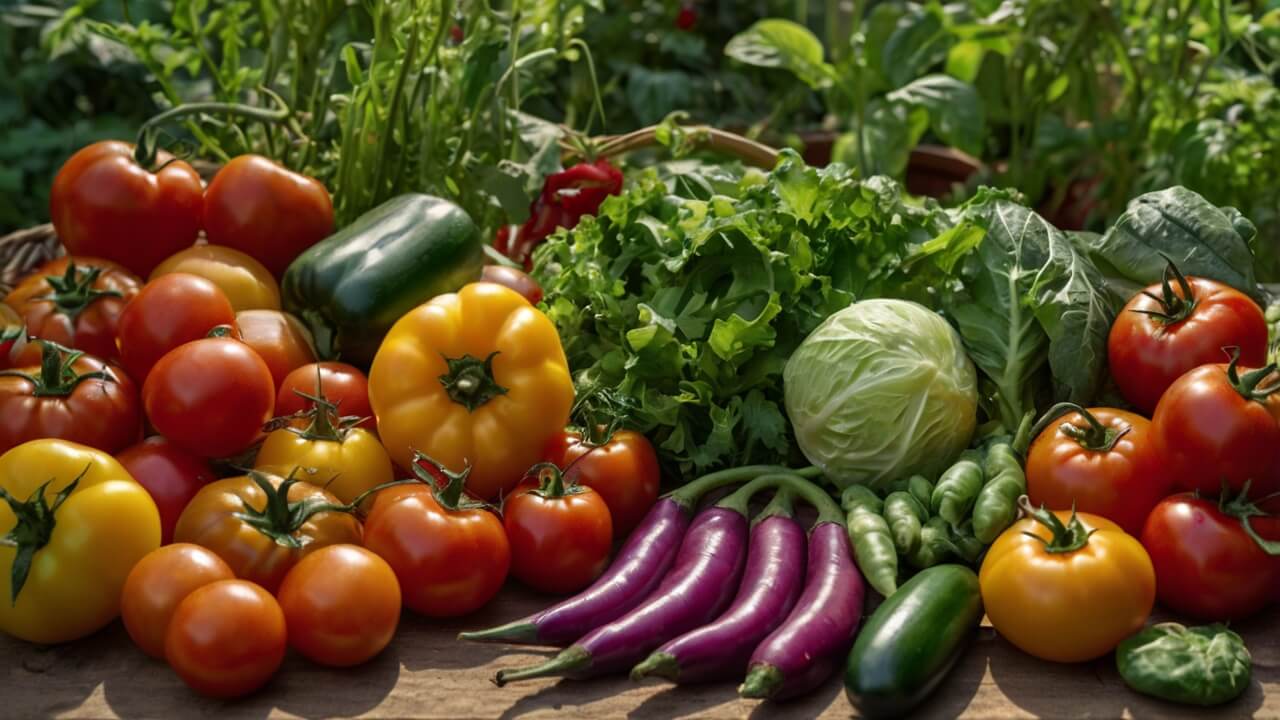
AIP Pumpkin Pie or Pumpkin Muffins
These pumpkin-based treats are a delightful way to satisfy your sweet tooth while adhering to the AIP diet. The pumpkin pie is a classic favorite, with a creamy filling made from pureed pumpkin, coconut milk, and natural sweeteners like maple syrup or honey.
The crust is crafted from a blend of AIP-friendly flours, such as coconut or cassava flour, and healthy fats like coconut oil or ghee. For a portable option, try the pumpkin muffins, which are equally delicious and easy to grab on-the-go.
Oven-baked Chocolate Pancakes or AIP Brownie Mug Cake
Chocolate lovers rejoice! These decadent treats are sure to satisfy your cravings without compromising your dietary needs. The oven-baked chocolate pancakes are a unique twist on a breakfast favorite, made with coconut flour, cacao powder, and natural sweeteners.
Serve them with a drizzle of maple syrup or a dollop of coconut yogurt for an indulgent yet AIP-compliant treat. Alternatively, the AIP brownie mug cake is a quick and easy dessert that can be whipped up in a matter of minutes.
Simply combine the ingredients in a mug, microwave, and enjoy a rich and fudgy treat that’s perfect for satisfying those chocolate cravings.
Coconut Mango Sago Tapioca Pudding
This tropical-inspired dessert is a refreshing and creamy delight that’s perfect for warmer weather. The base is made from coconut milk and tapioca pearls, which are naturally AIP-friendly.
Fresh mango chunks add a burst of sweetness and vibrant color, while a touch of vanilla extract enhances the overall flavor.
This pudding is not only delicious but also provides a good source of healthy fats and carbohydrates, making it a satisfying and nourishing treat.
Gluten-Free Orange Cranberry Muffins
These zesty muffins are a delightful combination of tart and sweet flavors, perfect for a snack or a light dessert. The base is made from a blend of AIP-friendly flours, such as coconut and cassava, and is naturally sweetened with maple syrup or honey.
Fresh orange zest and juice provide a bright, citrusy flavor, while dried cranberries add a pop of tartness and a beautiful pop of color. These muffins are not only delicious but also packed with fiber and nutrients from the fruit and gluten-free flours.
Additional Tips for a Vegetarian AIP Diet
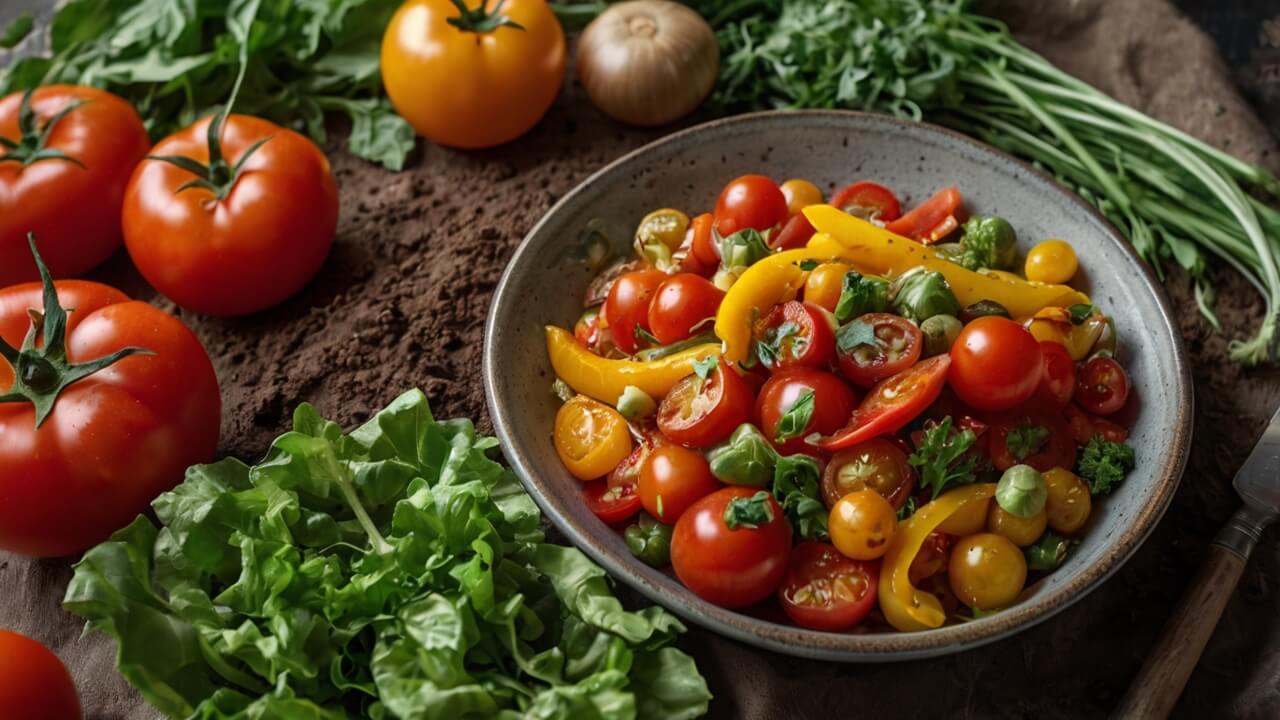
Using Coconut Aminos as a Soy Sauce Substitute
One of the challenges of following a vegetarian AIP diet is finding suitable alternatives to common ingredients like soy sauce. Coconut aminos, a savory seasoning sauce made from the aged sap of coconut blossoms and sea salt, can be an excellent soy sauce substitute. Unlike soy sauce, coconut aminos are free from gluten, soy, and other ingredients restricted on the AIP diet. They provide a rich, umami flavor that can enhance the taste of dishes without compromising your dietary requirements.
Replacing Nightshades with Turmeric, Ginger, and Lime Juice
Nightshades, such as tomatoes, peppers, and eggplants, are among the restricted foods on the AIP diet due to their potential to trigger inflammation. However, you can still enjoy flavorful and vibrant dishes by incorporating spices like turmeric and ginger, as well as citrus fruits like lime. Turmeric’s earthy and slightly bitter flavor, combined with the warmth of ginger and the tangy kick of lime juice, can add depth and complexity to your AIP-friendly meals, replacing the flavors typically provided by nightshades.
Verifying Ingredients and Methods for AIP Compliance
When following the AIP diet, it’s crucial to carefully read ingredient labels and verify the compliance of each item you plan to use in your recipes. Many seemingly innocuous ingredients, such as certain thickeners, emulsifiers, or preservatives, may contain components that are not allowed on the AIP diet. Additionally, certain cooking methods, like deep-frying or using non-stick cookware, can introduce unwanted substances into your food. Stay vigilant and double-check the AIP compliance of both ingredients and cooking techniques to ensure you’re adhering to the protocol.
Strategies for Efficient Meal Planning and Preparation
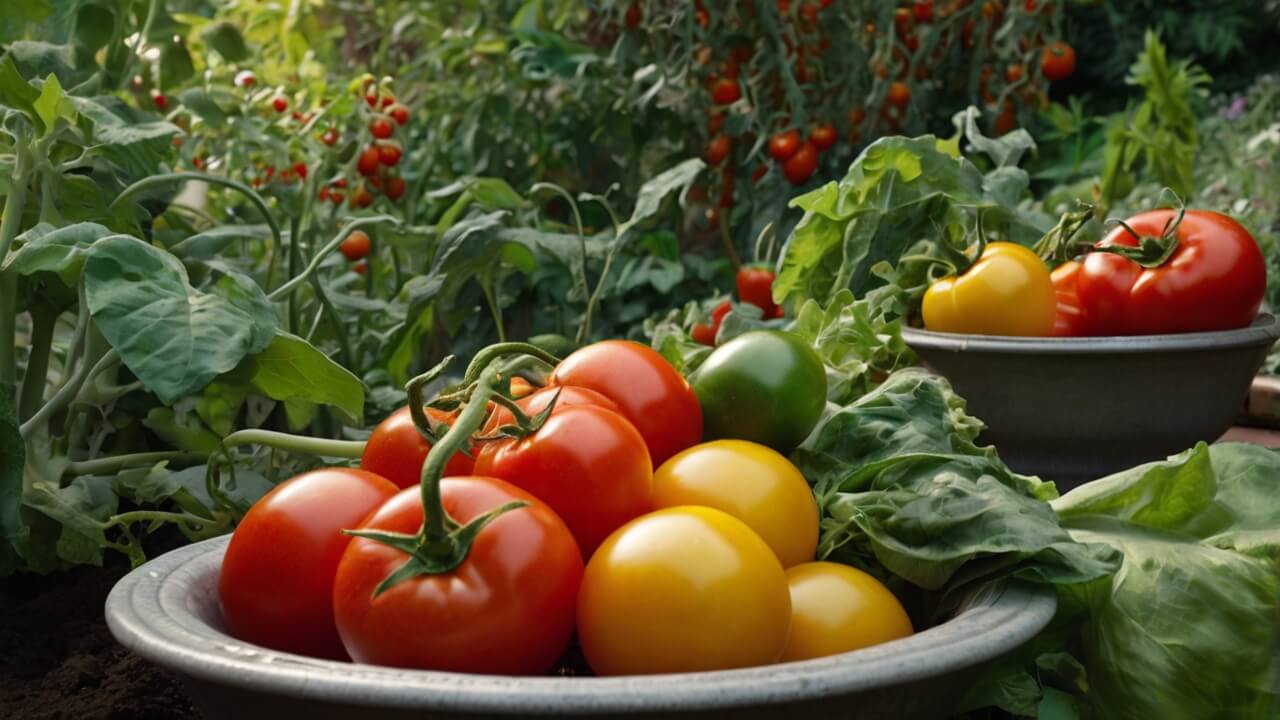
Meal planning and preparation are crucial for successfully following a vegetarian AIP diet. With a little forethought and organization, you can ensure that you always have delicious and compliant meals on hand, even during busy weeks.
Batch Cooking and Meal Prepping Tips
Batch cooking and meal prepping can save you a significant amount of time and effort throughout the week. Set aside a few hours on the weekend or a designated day to prepare several dishes in advance. Here are some tips to make the most of your meal prepping sessions:
- Cook in bulk: Double or triple recipes for staple dishes like vegetable stews, curries, or casseroles. Portion them out into individual servings and store them in the refrigerator or freezer for easy reheating.
- Prep ingredients: Wash, chop, and prepare vegetables, fruits, and other ingredients in advance. Store them in airtight containers or resealable bags for quick assembly during the week.
- Make versatile components: Prepare versatile components like roasted vegetables, cooked grains (if reintroduced), or homemade sauces that can be used in multiple dishes.
- Utilize leftovers: Plan meals that can utilize leftovers from previous dishes, reducing waste and saving time.
Shopping Lists and Pantry Essentials
Having a well-stocked pantry and a comprehensive shopping list can streamline your meal planning and preparation process. Here are some tips for creating effective shopping lists and maintaining a well-stocked AIP-friendly pantry:
- Make a weekly meal plan: Decide on your meals for the upcoming week and create a shopping list based on the ingredients needed.
- Check your pantry: Before grocery shopping, take inventory of your pantry and refrigerator to avoid buying items you already have.
- Stock up on staples: Keep your pantry stocked with AIP-friendly staples like coconut milk, olive oil, vinegars, spices, and gluten-free flours.
- Buy in bulk: For items you use frequently, consider buying in bulk to save money and reduce the number of trips to the grocery store.
- Prioritize fresh produce: Make sure to include a variety of fresh fruits and vegetables on your shopping list to ensure a nutrient-dense diet.
By implementing these strategies for efficient meal planning and preparation, you’ll be able to enjoy delicious and compliant vegetarian AIP meals without feeling overwhelmed or deprived.
Ensuring Adequate Protein Intake Without Legumes and Nuts
One of the main challenges of following a vegetarian AIP diet is getting enough protein without relying on legumes, nuts, and seeds, which are restricted on the protocol. However, there are several plant-based protein sources that are AIP-friendly and can be incorporated into your meals.
Vegetables: While not typically considered a significant protein source, certain vegetables like spinach, broccoli, Brussels sprouts, and mushrooms can contribute to your daily protein intake. Aim to include a variety of these in your meals.
Gluten-Free Grains: Pseudocereals like quinoa, amaranth, and buckwheat are allowed on the AIP diet and can provide a good amount of plant-based protein. Be sure to source them from reliable gluten-free sources.
Coconut Products: Coconut meat, coconut flour, and coconut milk are not only rich in healthy fats but also offer a decent amount of protein. Incorporate them into your recipes whenever possible.
Protein Powders: If you’re struggling to meet your protein needs through whole foods, consider using AIP-friendly protein powders like pea protein, collagen peptides, or bone broth protein powder. These can be easily added to smoothies, baked goods, or other dishes.
Meat Substitutes: While not suitable for strict vegetarians, those following a plant-based diet may consider incorporating AIP-friendly meat substitutes like jackfruit or mushrooms. These can provide a meaty texture and additional protein.
Remember to combine different protein sources throughout the day to ensure you’re getting a complete array of essential amino acids. Additionally, proper meal planning and portion control can help you meet your daily protein requirements.
Tips for Transitioning to the AIP Diet
Shifting to the Autoimmune Protocol (AIP) diet can be a significant lifestyle change, especially when combining it with a vegetarian diet. However, with proper planning and a gradual approach, you can make this transition smoother and more sustainable. Here are some tips to help you gradually transition to the vegetarian AIP diet:
Start by Eliminating One Food Group at a Time: Instead of overhauling your entire diet at once, begin by removing one food group that’s not AIP-compliant, such as grains or legumes. Give yourself time to adjust to the change before moving on to the next group.
Experiment with AIP-Friendly Alternatives: Explore AIP-friendly alternatives to your favorite foods. For example, try using coconut flour or cassava flour instead of wheat flour, and coconut milk or almond milk instead of dairy milk.
Plan Your Meals: Meal planning is crucial when following a restrictive diet like the AIP. Dedicate time each week to plan your meals and make a grocery list to ensure you have all the necessary ingredients on hand.
Batch Cook: Prepare larger portions of AIP-compliant meals and snacks, and store them in the refrigerator or freezer for easy access throughout the week. This will save you time and reduce the temptation to reach for non-compliant foods.
Read Labels Carefully: Always read ingredient labels carefully, even for products you’ve previously consumed. Manufacturers can change their formulations, and some seemingly safe products may contain hidden non-compliant ingredients.
Strategies for Staying Motivated and Overcoming Challenges
Maintaining motivation and overcoming challenges are essential for long-term success with the vegetarian AIP diet. Here are some strategies to help you stay on track:
Find Support: Join online communities or local support groups for individuals following the AIP diet. Sharing experiences, recipes, and encouragement can be incredibly motivating and helpful.
Celebrate Small Wins: Recognize and celebrate your progress, no matter how small. Whether it’s successfully avoiding a non-compliant food or finding a new AIP-friendly recipe you love, acknowledge your achievements.
Keep a Food Journal: Maintaining a food journal can help you identify potential triggers and track your progress. It can also serve as a reminder of how far you’ve come and the benefits you’ve experienced.
Plan for Social Situations: Dining out or attending social events can be challenging when following a restrictive diet. Plan ahead by researching restaurant menus, bringing your own AIP-compliant dishes, or informing hosts about your dietary needs.
Be Patient and Kind to Yourself: Transitioning to a new diet can be difficult, and setbacks may occur. Be patient and kind to yourself throughout the process. If you slip up, don’t beat yourself up; simply get back on track with your next meal.
Importance of Self-Care and Stress Management
Chronic stress can exacerbate autoimmune conditions, making self-care and stress management essential components of the AIP diet. Here are some strategies to prioritize your well-being:
Practice Mindfulness: Incorporate mindfulness practices, such as meditation, deep breathing exercises, or yoga, into your routine. These activities can help reduce stress and promote overall well-being.
Get Enough Sleep: Adequate sleep is crucial for managing autoimmune conditions and overall health. Aim for 7-9 hours of quality sleep each night and establish a consistent sleep routine.
Exercise Regularly: Regular physical activity can help reduce inflammation, boost mood, and promote better sleep. Choose low-impact activities that you enjoy, such as walking, swimming, or gentle yoga.
Engage in Stress-Relieving Activities: Identify and engage in activities that help you relax and unwind, such as reading, listening to music, taking a warm bath, or spending time in nature.
Seek Professional Support: If you’re struggling with stress, anxiety, or depression, don’t hesitate to seek support from a mental health professional. They can provide valuable coping strategies and guidance.
Remember, the vegetarian AIP diet is not just about the food you eat; it’s also about nurturing your overall well-being. By incorporating self-care practices and stress management techniques, you can better manage your autoimmune condition and improve your quality of life.
Conclusion
Following a vegetarian Autoimmune Protocol (AIP) diet can be challenging, but the benefits make it worthwhile for those managing autoimmune conditions.
By eliminating inflammatory foods like gluten, grains, dairy, legumes, nuts, seeds, and nightshades, you reduce the potential triggers that can exacerbate autoimmune symptoms.
The recipes provided in this article demonstrate that a vegetarian AIP diet can be delicious, nutrient-dense, and satisfying.
We encourage you to try these recipes and explore the world of AIP-friendly ingredients. Don’t hesitate to get creative and adapt the recipes to suit your taste preferences while adhering to the AIP guidelines.
Remember, every step you take towards a healthier lifestyle is a step towards better managing your autoimmune condition.
Subscribe to our newsletter to receive regular updates on new AIP-friendly recipes, tips, and insights. Join our community and share your own experiences, favorite recipes, or any challenges you face while following the vegetarian AIP diet. Together, we can support and inspire one another on this journey towards better health and well-being.

